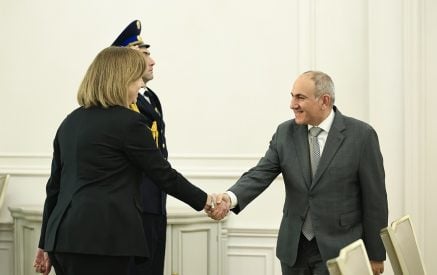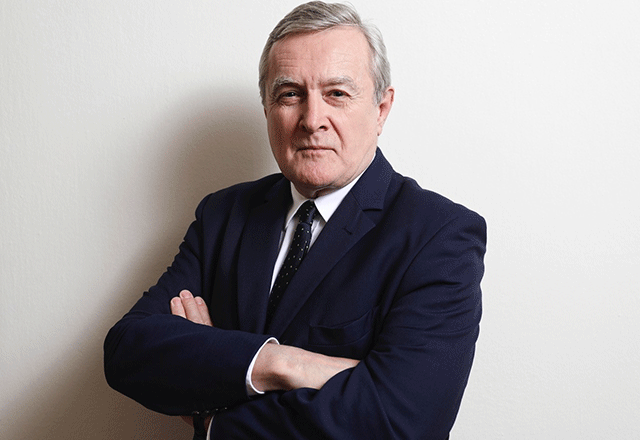Prof. Piotr GLIŃSKI
Professor of Humanities. Deputy Prime Minister, Minister of Culture and National Heritage. In 2005 – 2011, President of the Polish Sociological Association. Has cooperated with the Institute of Philosophy and Sociology, Polish Academy of Sciences. In 1997 -2005, Head of the Civic Society Department.
We Are Custodians of This Memory. 80th Anniversary of the Warsaw Ghetto Uprising
In April 1943, on the eve of the Jewish holiday of Passover, the Germans occupying the Polish capital surrounded the Warsaw Ghetto – the Jewish quarter they had created – in preparation for its final liquidation. On 19 April, the German police and SS auxiliary forces entered the ghetto to complete the extermination. Its residents took refuge in bunkers and hideouts. Jewish insurgents attacked the Germans with firearms, Molotov cocktails and hand grenades. Two German vehicles were set on fire with petrol bottles. The surprised occupiers were initially unable to break through the fierce resistance of the ghetto defenders.
Read also
Faced with strong opposition and early setbacks, the Germans began to systematically burn buildings, turning the ghetto streets into a fire trap. As the fighting continued inside, units of the Polish underground army moved against the Germans on the outside of the ghetto.
Three sections of the Home Army tried unsuccessfully to breach its walls with explosives. The doomed Jews fought until the beginning of May. The Germans’ demolition of the Great Synagogue on Tłomackie Street in Warsaw was a symbolic final act to mark the fall of the uprising.
The Warsaw Ghetto Uprising was the first metropolitan insurrection and the largest Jewish revolt during the German occupation. On the afternoon of 19 April 1943, the combatants symbolically placed the red-and-white flag of Poland and the blue-and-white flag of the ŻZW on the roof of the Jewish Military Union stronghold at Muranowski Square. This image of the two flags flying together on the roof of the building above the embattled ghetto became a symbol of the inseparable fate of Poles and Jews. Several months later, in August 1944, the Warsaw Uprising broke out – the fight for a free Poland, the largest freedom surge in the history of the Second World War.
In Polish history, literature, art and culture there are many references to uprisings. They gave hope, lifted spirits and comforted hearts but were almost always brutally suppressed by partitioners and occupiers. Although tragic and often inevitable, they built a community identity and usually brought victory years later. They have left a deep mark on Polish society and history.
Consequently, they’ve become a frequent theme in literature, painting and film. And although artists portrayed the events in various ways, they hardly ever criticised the very idea of the uprising. They advocated the fight for freedom, elevating it to the cultural pedestal.
During the Second World War, Jews and Poles clashed with German criminals in two uprisings in Warsaw, the capital of Poland. The city was eventually left in ruins, destroyed and burnt down. This proves the strength of the Polish imperative for freedom.
The question may be asked: Why in Warsaw? It is worth recalling that in 1939, on the eve of the German invasion of Poland, almost 370,000 Jews were living in Warsaw. They constituted about 30 per cent of the city’s total population. In the year following the outbreak of the Second World War, nearly 100,000 more Jews arrived in the Polish capital, systematically displaced by the Germans from the lands incorporated into the Third Reich and from the occupied territories of Poland. In the spring of 1940, the Germans began the process of creating a closed-off Jewish quarter.
The final sealing off of the Warsaw Ghetto took place in November 1940. Behind the walls, on an area of 307 hectares, approximately 400,000 Jews were locked. In April 1941, resettlers poured into the ghetto. The number of people confined within its walls rose to 450,000. I’m quoting these figures not without reason.
The Warsaw Ghetto was the largest in Europe created by the Germans during the Second World War. In July 1942, they invaders begun mass deportation of Jews from the ghetto to the Treblinka extermination camp. It is estimated that between 250,000 and 300,000 Jews were murdered at that time. About 100,000 died in the ghetto from starvation and disease resulting from the inhumane conditions created by the German oppressors.
W say: “Jews”, but we must remember that they were citizens of Poland, the multinational, multicultural Second Polish Republic. It is therefore our common duty to commemorate the Warsaw Ghetto Uprising – the largest Jewish uprising during World War II and the first urban uprising in occupied Europe – and to keep in memory the courage of those who resisted the German occupiers. These days, more than 150 events are taking place in Poland to mark the official commemoration of the 80th anniversary of the Warsaw Ghetto Uprising.
These events are organised or funded by the Polish government, including as part of the programme implemented by the Ministry of Culture and National Heritage to support activities that preserve the legacy and memory of Polish Jews. Since the United Right took over the government, we have more than tripled funding for institutions whose activities include preserving the memory, culture and legacy of the multicultural Polish nation – including the heritage of the Jewish minority in Polish lands – as well as commemorating the Holocaust of Jews perpetrated by the Germans in occupied Poland.
Among the institutions subsidised by the Polish government are the state museums in the former German death camps: the Auschwitz-Birkenau State Museum in Oświęcim; the State Museum at Majdanek (with branches: Museums and Memorials in Bełżec and Sobibór); the Stutthof Museum in Sztutowo; the Treblinka Museum; the Gross-Rosen Museum in Rogoźnica; the KL Plaszow Museum in Kraków. Also the Warsaw Ghetto Museum, the Ulma Family Museum of Poles Saving Jews in World War II in Markowa, the Remembrance Museum of Land of Oświęcim Residents, the POLIN Museum of the History of Polish Jews and the Emanuel Ringelblum Jewish Historical Institute. These include institutions that have existed for decades, often underfunded in the past, as well as those that have been established in recent years for the sake of remembrance: The Warsaw Ghetto Museum, the Ulma Family Museum of Poles Saving Jews in World War II in Markowa, and the Remembrance Museum of Land of Oświęcim Residents.
Today, Warsaw is a city of the living. Poland is a country of the living. We remember the past and draw on historical experience to build a better future. But we do not forget those who died or were murdered. The memory passed down through the generations must last forever. And today, we are its custodians.
Piotr Gliński
The text has been published in cooperation with the Polish monthly “Wszystko co Najważniejsze” as part of a historical project involving the Institute of National Remembrance and the Polish National Foundation.



























































